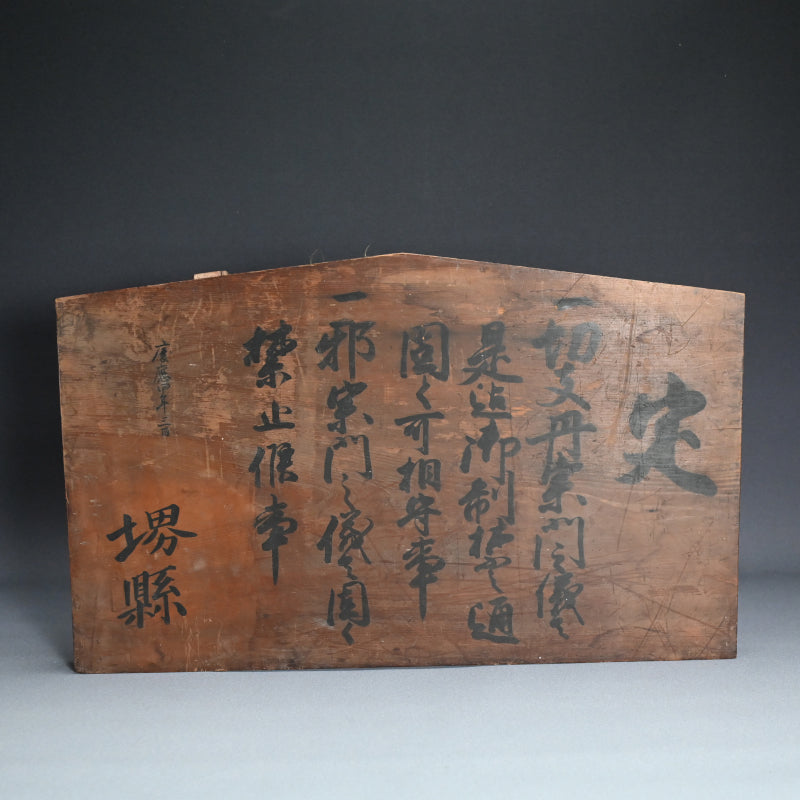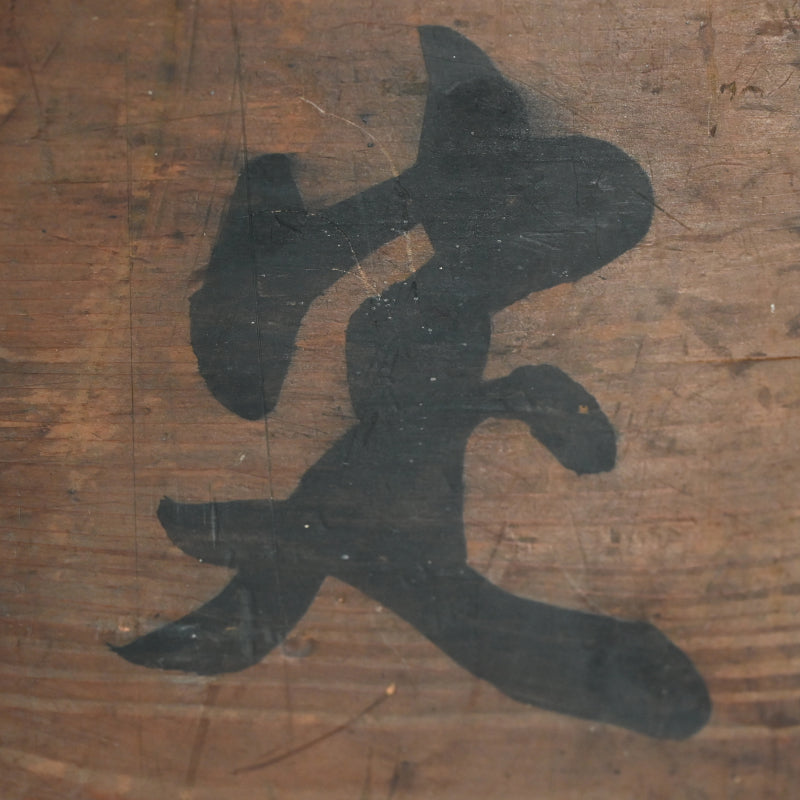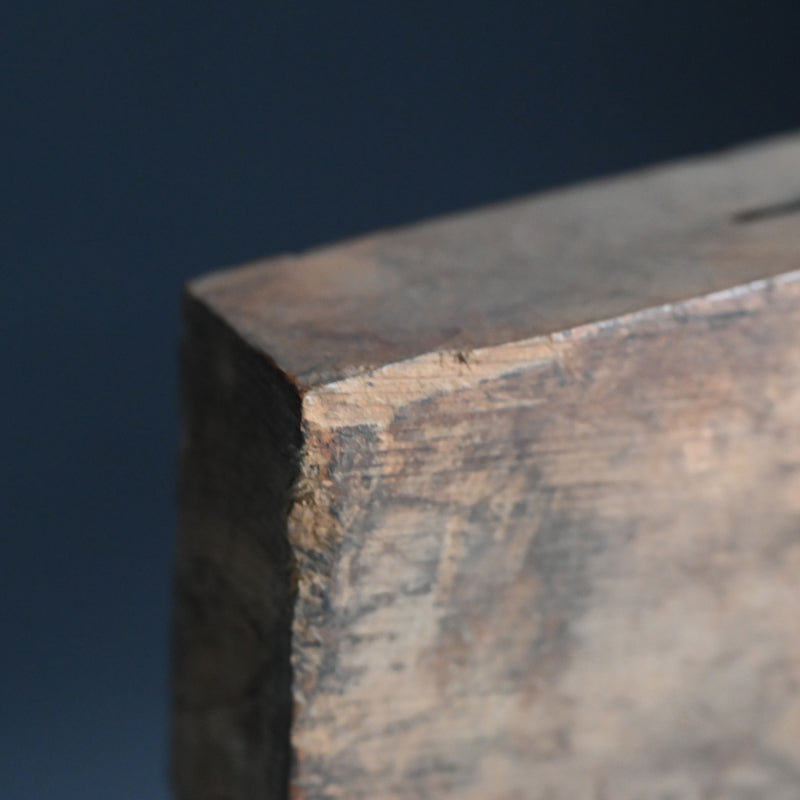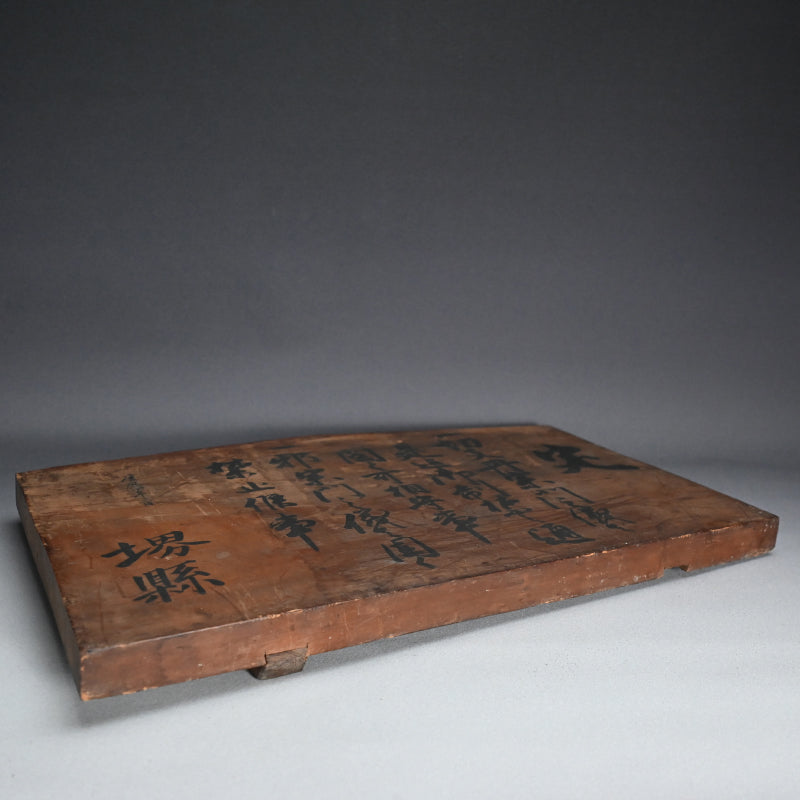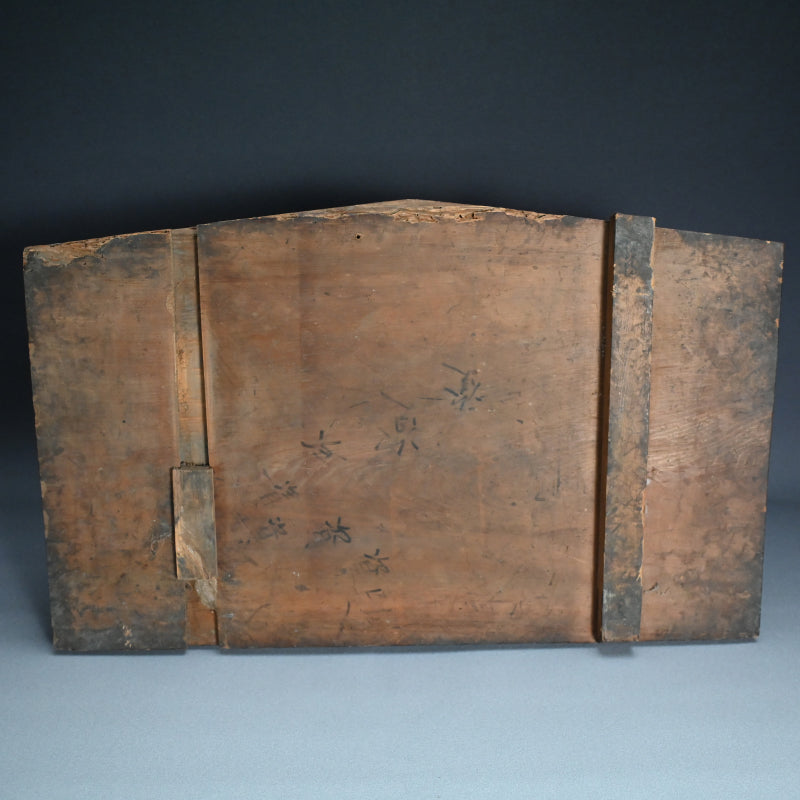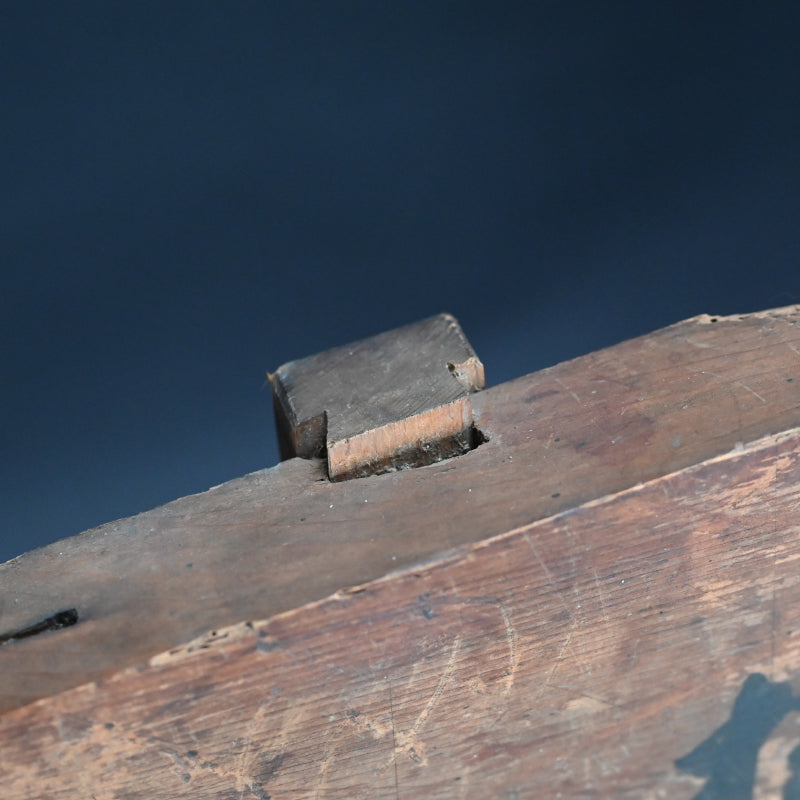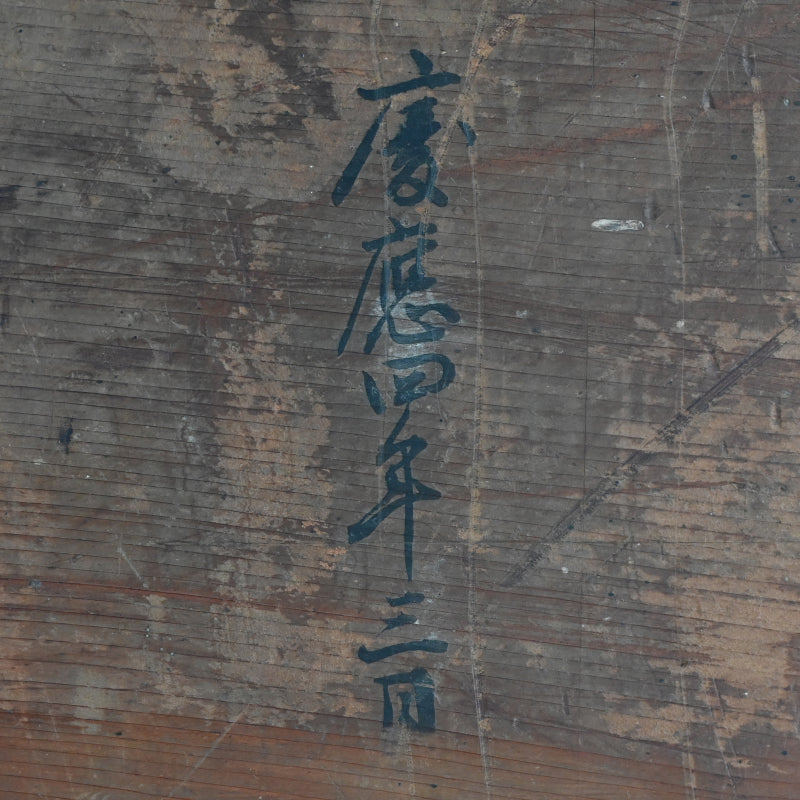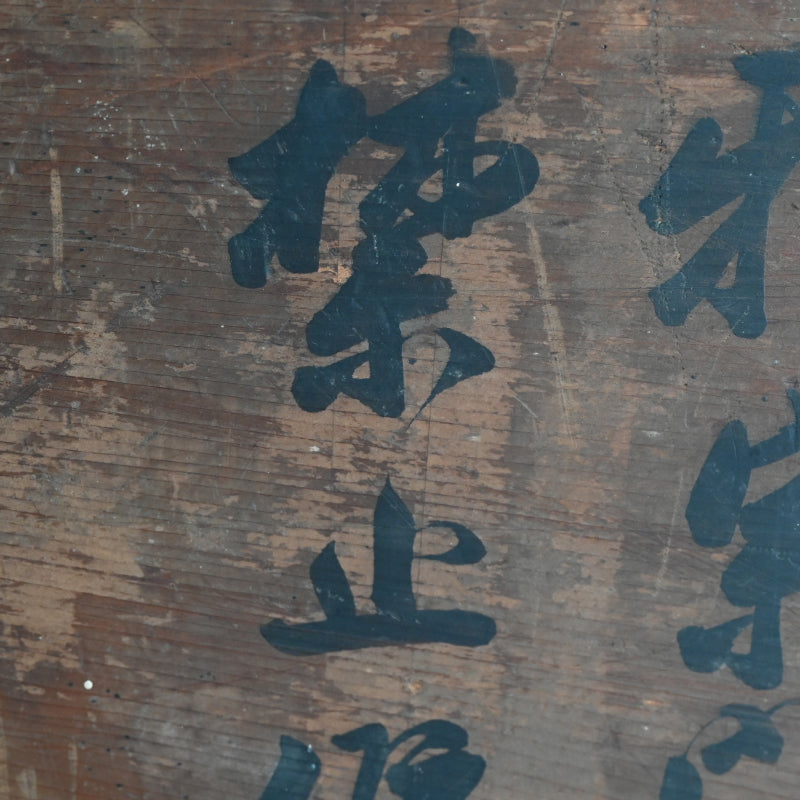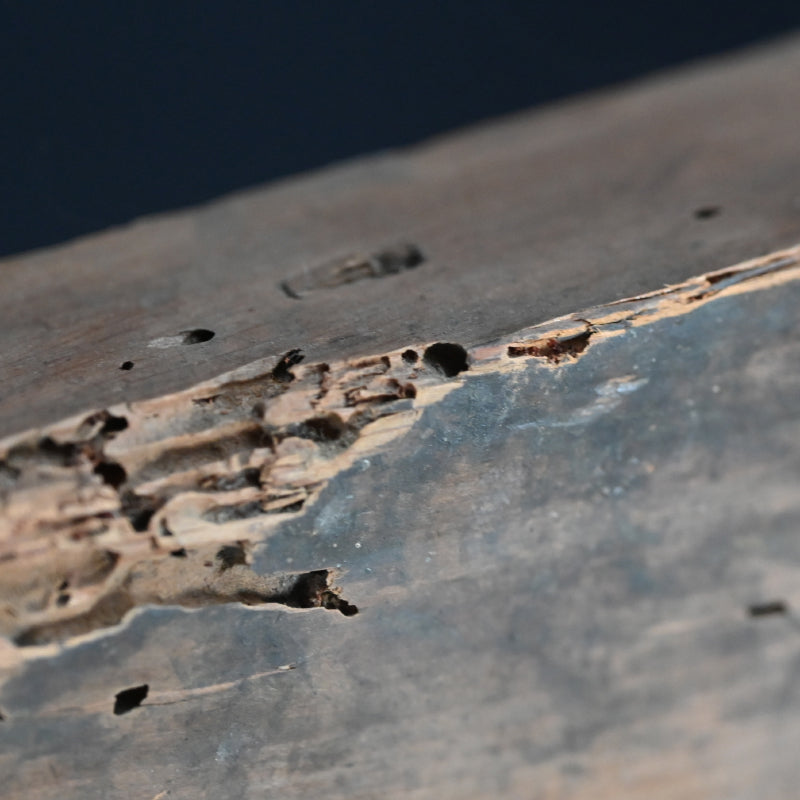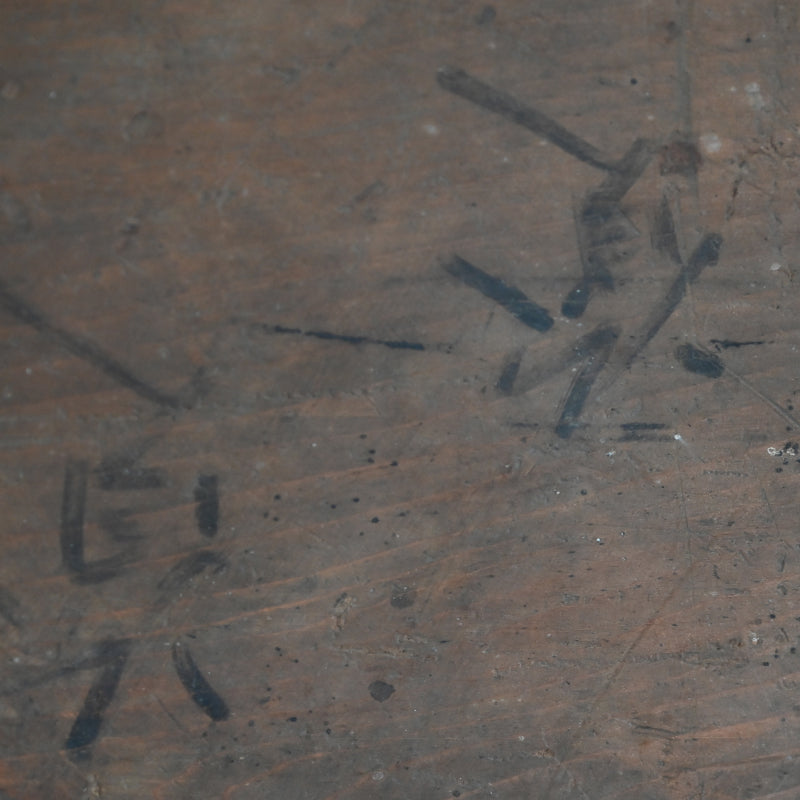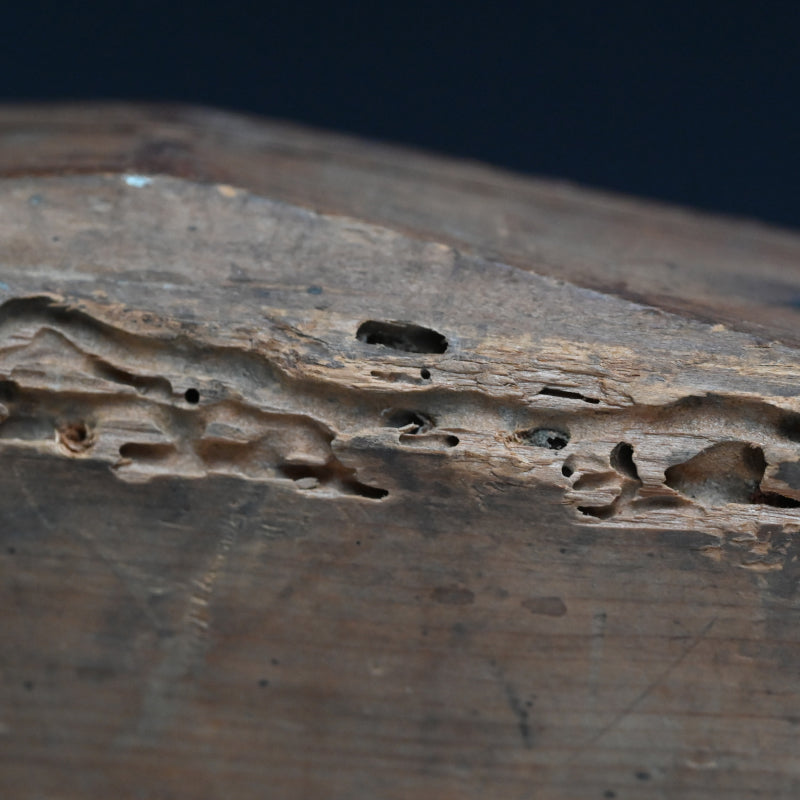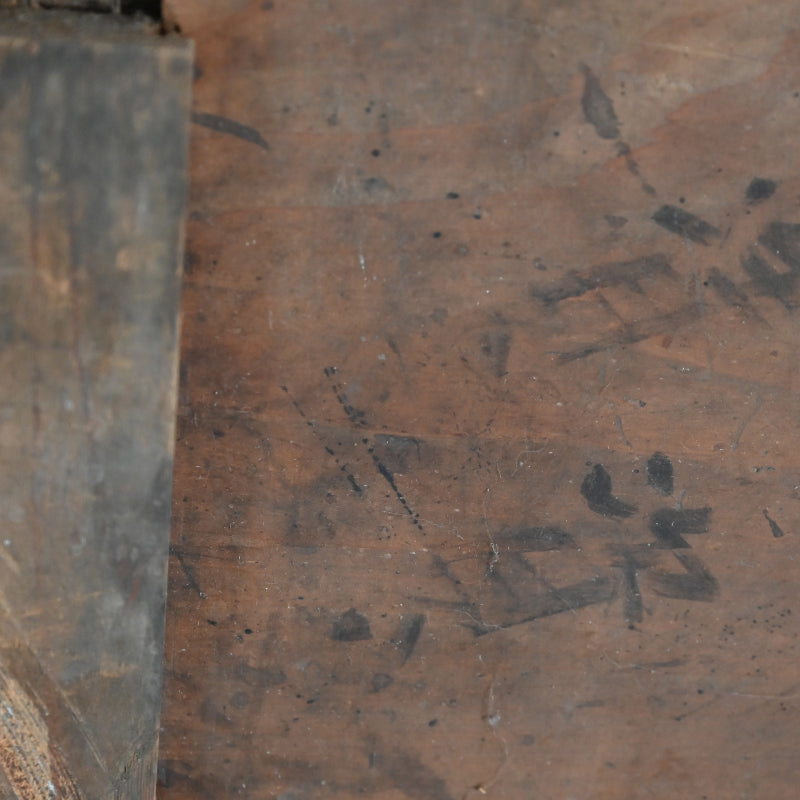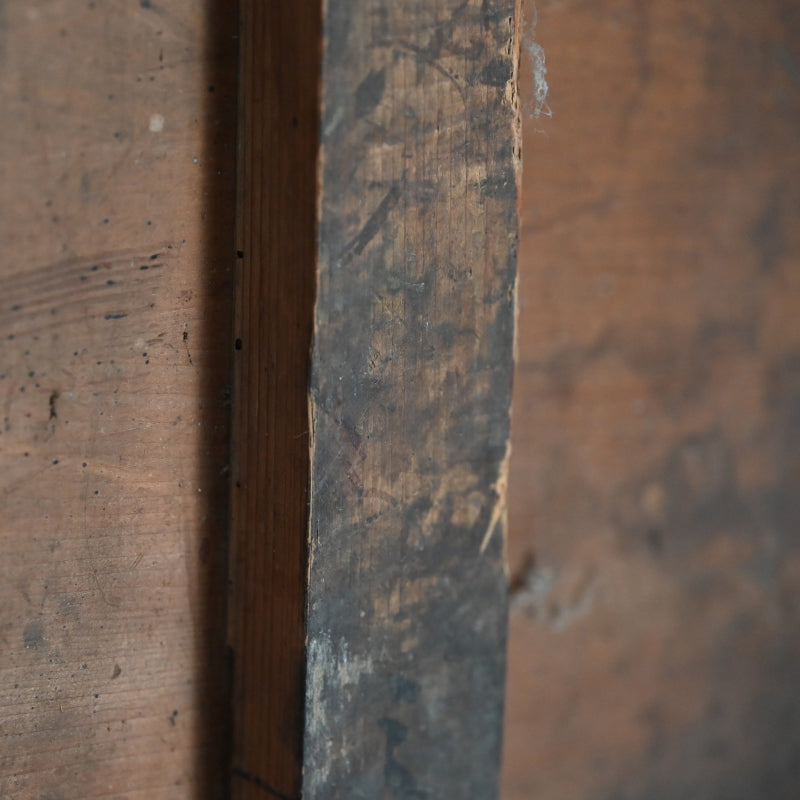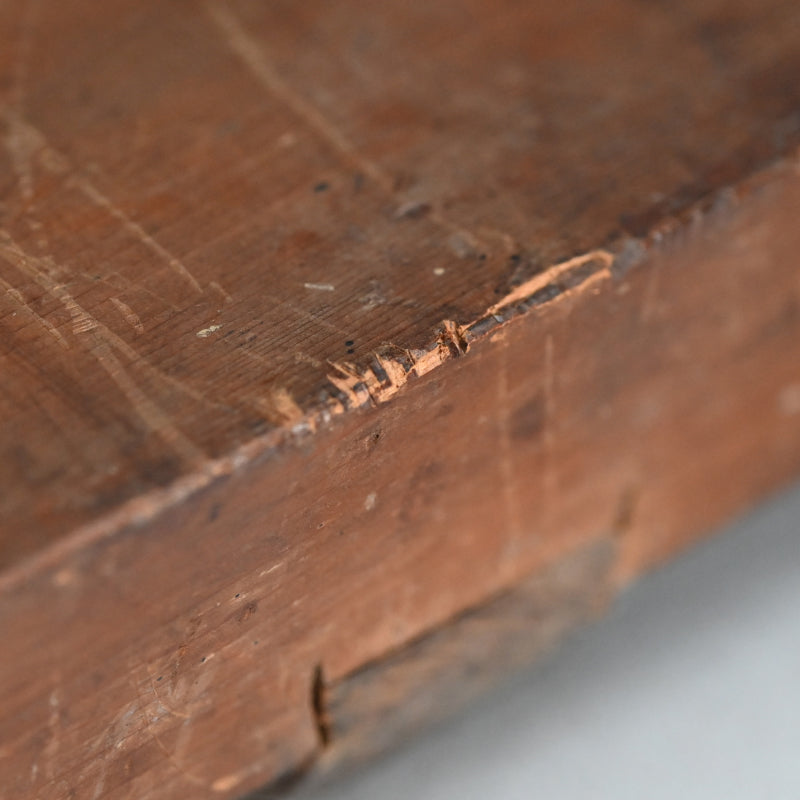1868 Wooden Kosatsu Sign Board Banning Christianity in Sakai
1868 Wooden Kosatsu Sign Board Banning Christianity in Sakai
Item Code: K815
Since this product is an oversized item that requires custom shipping, please send us a message with the delivery address and we will come back to you with a shipping quote.
Contact form
One of a series of three famous proclamations issued in Keio 4 (1868) by the newly established Meiji government, this one reenforcing the ban on Christianity. The wooden signboard is 68.5 x 42.5 x 4cm (27 x 17 x 1-1/2 inches) and is in overall fine condition. It reads:
定
一 切支丹宗門之儀ハ是迄御制禁之通固く可相守事
一 邪宗門之儀ハ固く禁止候事
慶応四年三月
堺縣
Regulations:
With regard to the Kirishitan religion (Christianity), it shall be strictly observed in accordance with the existing prohibition.
With regard to heretical sects, they are strictly forbidden.
3rd month of Keio 4 Sakai
These signboard proclamations (Called Kosatsu or takafuda) were created in 1868 (Keiō 4), during the Bakumatsu-Meiji Restoration period, when the Meiji government installed the Five Public Notices (Gobō no Keiji) as placards to announce its civil governance policy.
The Gobō no Keiji were five official placards issued by the Dajōkan (the central government of the new Meiji regime) on April 7, 1868 (Keiō 4, 15th day of the 3rd month). The day before, the government had promulgated the "Charter Oath," outlining its fundamental policy. These placards presented, for the first time, prohibitions the general populace was expected to obey.
The Meiji government ordered the removal of the shogunate's old placards and replaced them with these new ones. Of the five, the first three (Placards 1–3) were known as the Three Fixed Placards (Jōsan-fuda) and were intended to be displayed permanently. Their contents were:
- First Placard: Uphold the moral principles of the Five Relationships (Confucian ethics); prohibit murder, arson, and robbery.
- Second Placard: Prohibit forming factions (tōtō), submitting violent petitions (gōso), or abandoning one's village (chōsan).
- Third Placard: Prohibit the practice of Christianity and other “heretical religions.”
The remaining two placards (Placards 4 and 5) were Provisional Notices (Kakusatsu) to be displayed temporarily "until further notice":
- Fourth Placard: Mandated that foreign relations be conducted according to international law and prohibited violence against foreigners.
- Fifth Placard: Prohibited citizens from fleeing the country, especially samurai and commoners, and held employers accountable for harboring such fugitives.
The Third Placard was later revised on May 25, 1868 (Keiō 4, intercalary 4th month, day 4), to separately ban Christianity and other heretical religions and to remove the reward system for reporting Christians. The Fifth Placard was withdrawn on November 16, 1871 (Meiji 4, 10th month, day 4). By February 24, 1873 the placard system itself was abolished, and the remaining placards (Placards 1–4) were also removed.
Sakai Prefecture (堺県, Sakai-ken) was established in 1868 (Meiji 1) to administer former shogunate lands and hatamoto (direct vassals of the shogun) territories in Izumi Province (present-day southwestern Osaka Prefecture). Later, its jurisdiction expanded to include the entire territories of Izumi Province, Kawachi Province (present-day eastern Osaka Prefecture), and Yamato Province (present-day Nara Prefecture).
Share
















